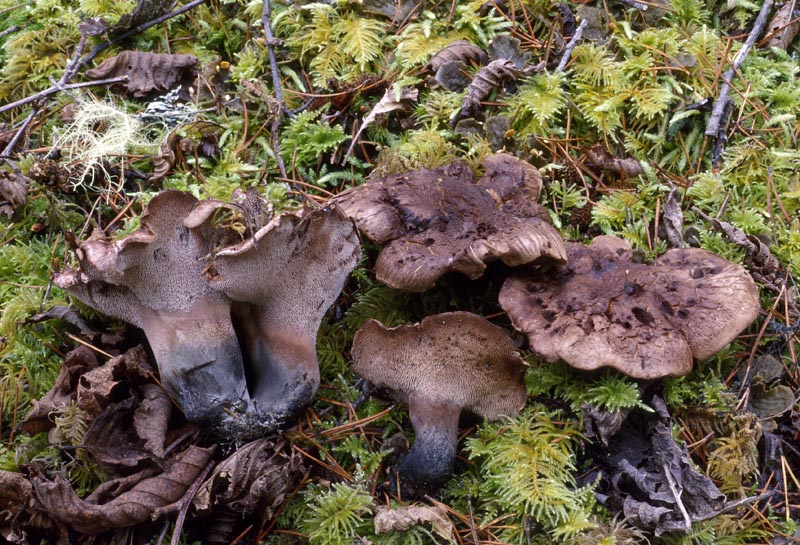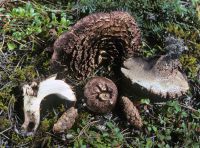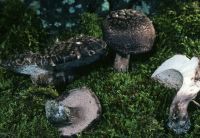Distribution: Common in PNW
Habitat: S. scabrosus occurs in conifer forests in the PNW, especially in second-growth stands of western hemlock and Douglas-fir with a salal understory.
Conservation Status: Not of concern
Sarcodon scabrosus is another large, stipitate hydnum that is common in the PNW, although not as common as S. imbricatus. It is similar in size and general appearance to the latter species, but differs by having a relatively smooth reddish brown cap when young (the scales develop with age, but do not become prominently upturned like those of S. imbricatus), a greenish black stipe base, and a moderate to strong farinaceous odor and strong bitter farinaceous taste. Other similar species include S. fennicus, a European species whose presence in North America is uncertain, S. rimosus, with a cracked gray-violet cap, cinnamon stipe, and flesh that turns pinkish when cut, S. subincarnatus, also with flesh that turns pinkish, but with pallid spines, farinaceous odor, green stipe base, and a scaly brown cap without reddish tones, and S. underwoodii, with fragile spines, a milder odor, and no green on the stipe base.
PNW Herbaria: Specimen records of Sarcodon scabrosus in the Consortium of Pacific Northwest Herbaria database
CalPhotos: Sarcodon scabrosus photos





